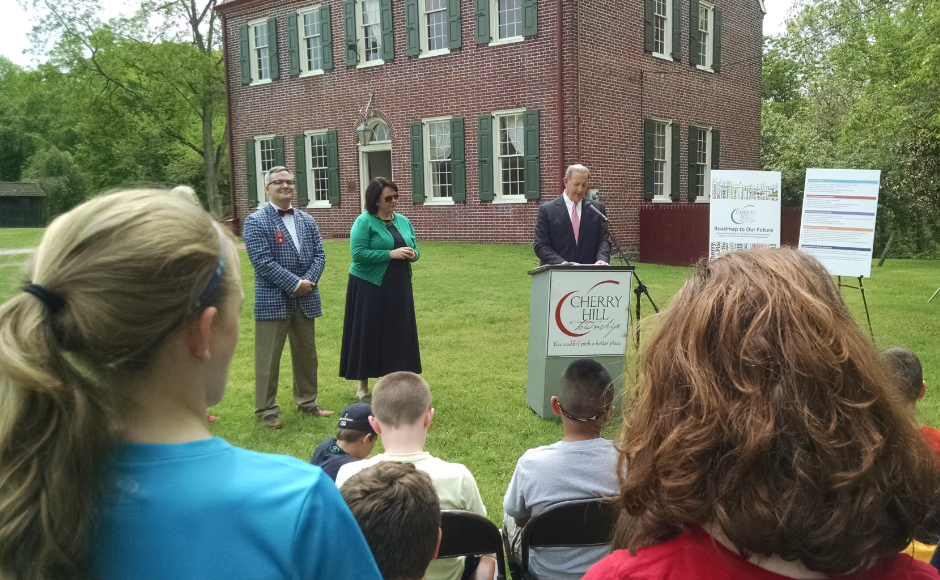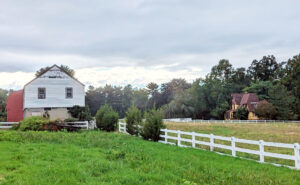The township becomes one of the first in the state to roll out a municipal sustainability plan. The ‘Roadmap to Our Future’ focuses not just on green energy practices, but on transit, arts, and culture, too.
By Matt Skoufalos
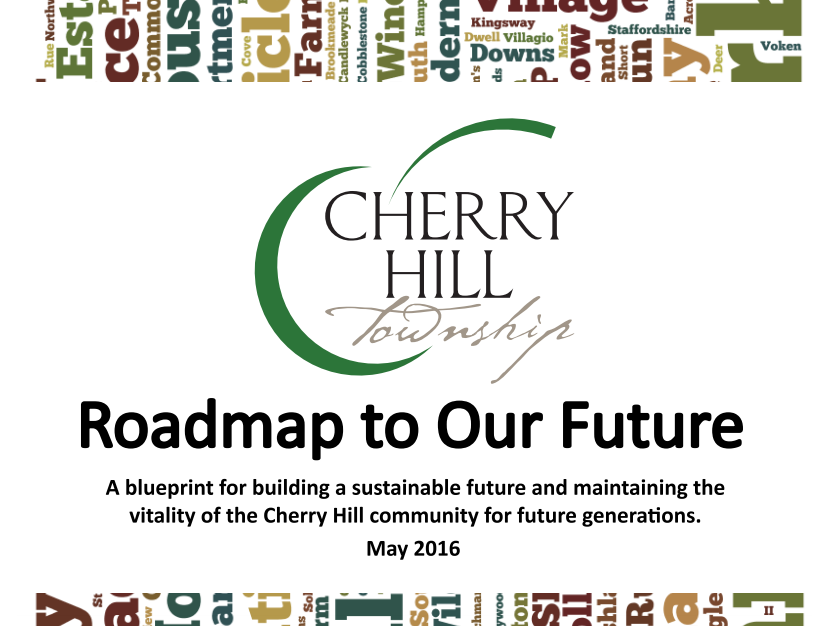
Cover of “Roadmap to Our Future,” the Cherry Hill municipal sustainability plan. Credit: Cherry Hill.
Growing up in Cherry Hill, Sustainable Jersey Communications Director Kristy Ranieri remembers time spent at the historic Barclay Farmstead, where she churned butter and skated on the pond when it froze over.
On Tuesday, she returned to Barclay to celebrate the launch of her hometown’s “Roadmap to Our Future,” a municipal plan that marks Cherry Hill as one of the first communities in the state to establish comprehensive sustainability policies.
“You are our state leader,” Ranieri told the crowd assembled at the farmstead, ticking off the list of accomplishments that the township has earned with the Sustainable Jersey program.
“Silver-certified. Sustainability Champion Award. The first schools certified under Sustainable Jersey for Schools,” she said. “I look forward to seeing what you do next, and taking the plan to other towns in the hopes that they can follow in your footsteps.
All Camden County towns are either registered with Sustainable Jersey or certified by it, which makes the county a statewide leader, Ranieri said. The nonprofit entity provides incentives, grants, and guidance to communities statewide to help lower operational costs and strengthen their longevity. Aside from celebrating local efficiency improvements, Sustainable Jersey looks for results it can reproduce from town to town, and across a variety of areas.
“Sustainability isn’t just being a greenie, it’s having a thriving business district and good arts; it’s this whole program,” Ranieri said.
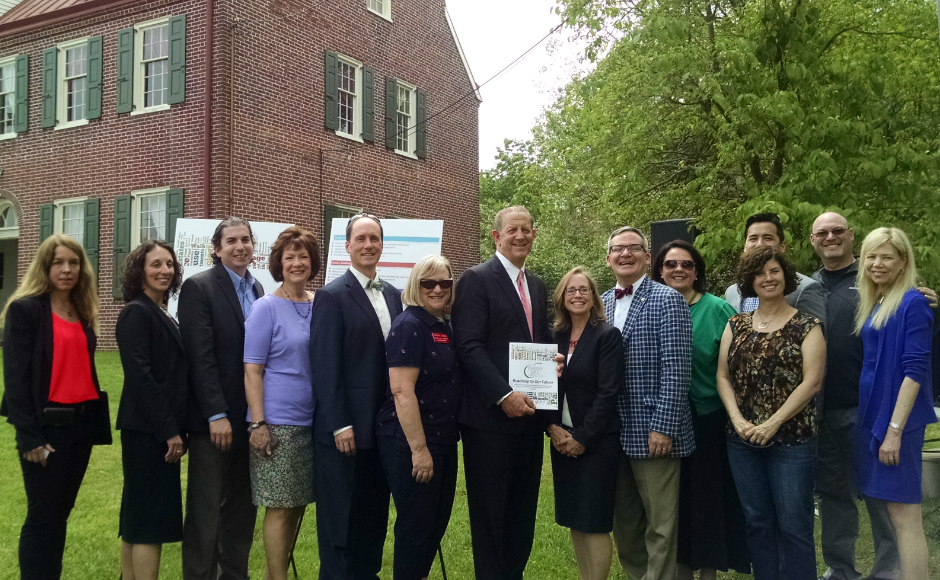
Local leaders at the launch of the Cherry Hill municipal sustainability plan. Credit: Matt Skoufalos.
“If you ask 10 people what ‘sustainability’ means, you’ll get 10 different answers,” said Sustainable Cherry Hill President Scott Downie.
“Everybody thinks about it differently,” Downie said. “We try to define it as broadly as possible.”
Language in the Roadmap promises the same. One of its pillars describes arts and culture as a source of empowerment; another charges the township to “aspire to be a beacon for highly educated and talented individuals” and a place for “forward-thinking governmental, business, civic and individual practices.”
The urgency to get behind energy efficiency and green building practices is necessitated by the impact of suburban sprawl that has pushed through the township for decades. A quarter-million vehicles travel through Cherry Hill daily, and energy use by its 25,000 homes and commercial square-footage that numbers in the millions is not insignificant.
Yet the Roadmap also extends conversations about sustainability into the local economy. It talks about recruiting businesses to reduce waste in their supply chains, and finding ways to connect them to neighborhoods via alternative modes of transit. Other policies it outlines target reduced vehicle traffic, traffic tickets for idling, and a Safe Streets plan that makes roadways safer for bikers and pedestrians as well as drivers. It even includes campaigns to help neighborhoods cut down on their usage of fertilizer and pesticides in lawn care.
“We wanted to create a roadmap that would be something for everybody, not based on numbers, because numbers change,” said Cherry Hill Mayor Chuck Cahn. “This is a little more all-encompassing. That’s why I really like it. Not everybody is on the same spectrum of sustainability.”
With emphases on arts, leadership, education, health and wellness, and ecology, however, the plan is written so that “no matter where you are, this has something for you,” Cahn said. Although there are benchmarks for each of its goals, the mayor said he’ll know if it’s working “if people start talking about it.
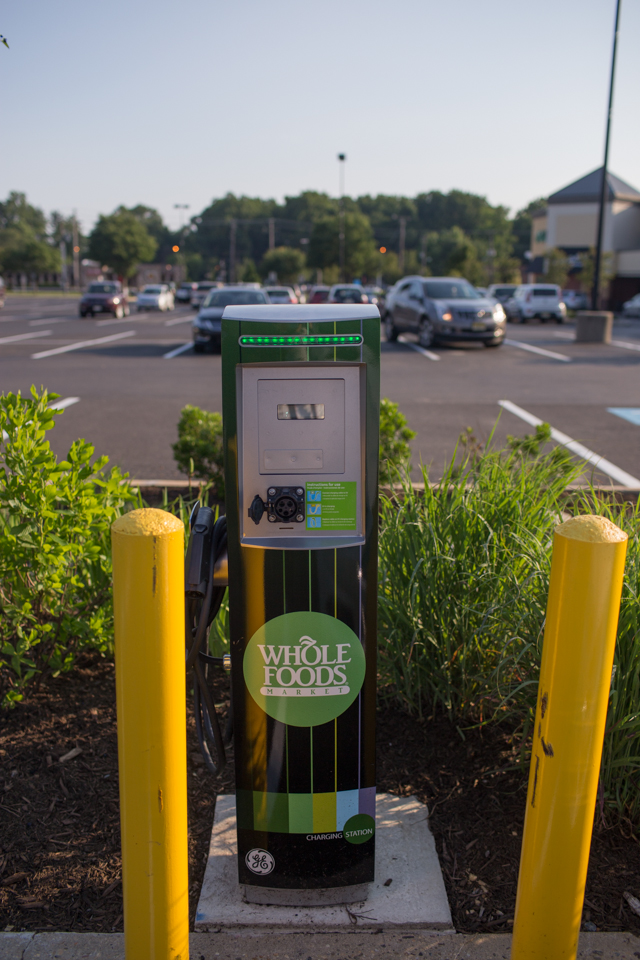
One of a few electric car charging stations in the Cherry Hill Whole Foods parking lot. Credit: Tricia Burrough.
“It’s up to people like myself to make sure the numbers are achieved,” Cahn said, but the impact of these policies is recognizable when “people [are] living it day to day.”
The Roadmap also charges the volunteer-led Sustainable Cherry Hill Green Team with the coordination and planning of sustainability activities in the township. It has goals of creating full- and part-time township positions to more efficiently execute those efforts.
Cahn pointed to the successes of the five-year-old Green Team as evidence of the results that can be driven from the civic involvement of community members.
“We’re all volunteers,” he said. “It’s extremely frustrating when you’re the mayor of a town of 72,000 people and you want to see more involvement. If you get involved, it will make a big difference.”
Click here to view the Roadmap to Our Future municipal sustainability plan for Cherry Hill.

